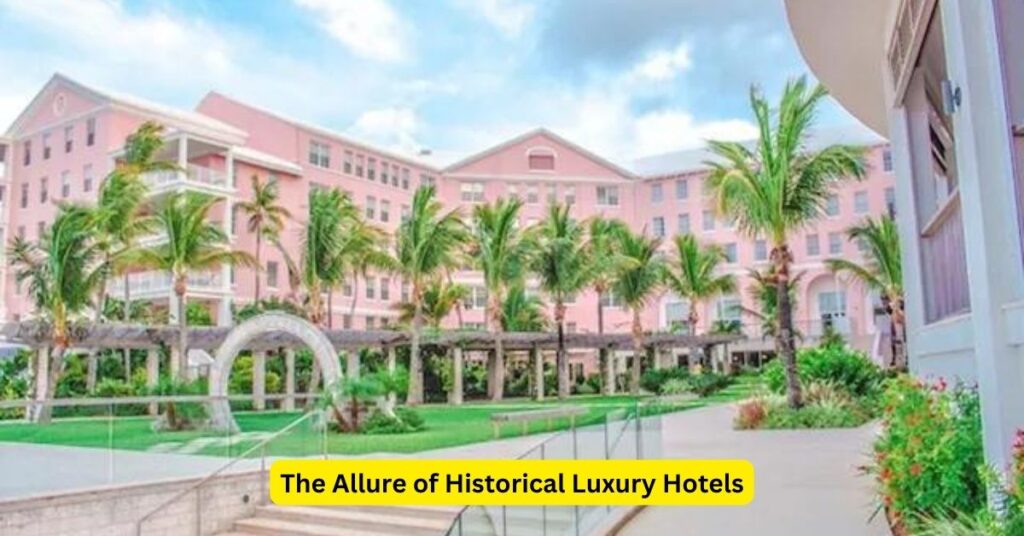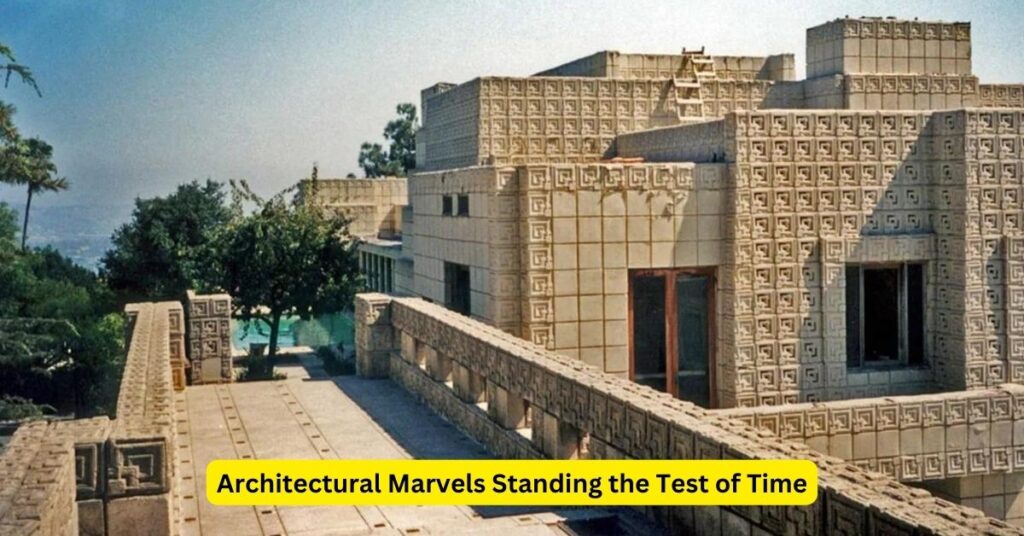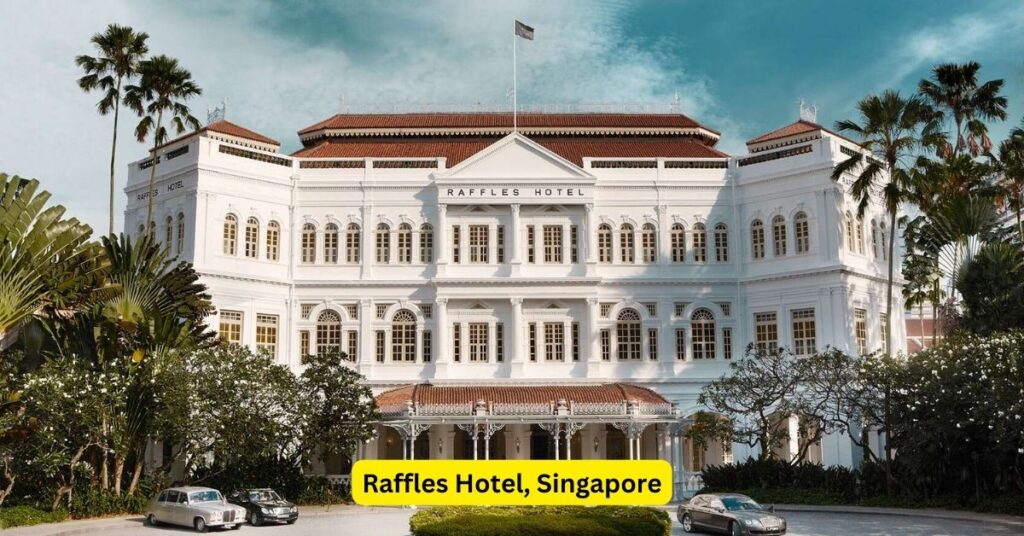seeking a taste of opulence and grandeur. Historical luxury hotels with modern amenities offer a journey through time while ensuring contemporary comforts. This article delves into the allure of such establishments, blending the charm of the past with the convenience of the present.
The Allure of Historical Luxury Hotels

Historical luxury hotels captivate visitors with their rich heritage, embodying the essence of a bygone era. From grandiose architecture to intricate detailing, each hotel tells a story of its own. These establishments often served as witnesses to significant historical events, making them living artifacts of a glorious past.
The allure of historical luxury hotels lies not only in their physical grandeur but also in the stories woven into their walls. The Ritz Paris, for instance, witnessed the roaring twenties and hosted luminaries like Ernest Hemingway, epitomizing the Golden Age of travel. The mystique of these hotels extends beyond aesthetics, offering guests a chance to immerse themselves in the historical narratives that have unfolded within their opulent confines.
Moreover, the authenticity of these hotels enhances their allure. Unlike modern constructions, historical luxury hotels bear the marks of time – creaky floorboards, antique furnishings, and aged patinas that tell tales of generations past. This authenticity provides a unique and irreplaceable charm, setting them apart from contemporary alternatives.
Preserving the allure of historical luxury hotels requires a delicate balance between conservation and adaptation. While maintaining the essence of the past, these hotels must evolve to meet the expectations of modern travelers. This harmonious coexistence between history and modernity is the key to their enduring appeal.
Architectural Marvels Standing the Test of Time

The architectural brilliance of historical luxury hotels is a testament to the craftsmanship of yesteryears. Imposing facades, ornate interiors, and meticulous attention to detail transport guests to a different epoch. The fusion of classical designs with modern amenities creates an enchanting atmosphere, where the old and the new coexist harmoniously.
The architecture of historical luxury hotels serves as a visual feast for guests, evoking a sense of awe and admiration. The Waldorf Astoria in New York City, with its Art Deco influences, stands as a shining example. The soaring columns, intricate moldings, and timeless aesthetics create an ambiance that transcends eras, offering a glimpse into the opulence of a bygone era.
Furthermore, these architectural marvels often reflect the cultural and societal values of their time. The historic Plaza de Armas Hotel in Cusco, Peru, for instance, showcases a blend of Spanish colonial and Inca influences. The preservation of such architectural diversity enhances the global appeal of historical luxury hotels, making them cultural landmarks beyond their hospitality functions.
While the external architecture sets the stage, the interiors of these hotels are equally captivating. Lavish ballrooms, majestic staircases, and opulent chandeliers contribute to the overall grandeur. Renovations and restorations are conducted with meticulous precision to ensure that these features remain as breathtaking as they were in their heyday.
Transforming Heritage into Modern Comfort

While preserving their historical charm, these hotels have seamlessly integrated modern amenities to cater to the contemporary traveler. State-of-the-art technology, luxurious spa facilities, and gourmet dining options ensure that guests experience the epitome of comfort and indulgence. The juxtaposition of history and modernity creates a unique and unforgettable stay for every visitor.
The integration of modern amenities serves as a testament to the adaptability of historical luxury hotels. High-speed internet, smart room controls, and cutting-edge entertainment systems coexist with antique furnishings and classical decor. This synthesis ensures that guests enjoy the best of both worlds – the charm of the past and the convenience of the present.
Moreover, the culinary offerings in these hotels often undergo a modern transformation while maintaining a nod to tradition. Historic hotels frequently collaborate with renowned chefs to curate menus that blend contemporary tastes with time-honored recipes. This gastronomic journey allows guests to savor the flavors of history while enjoying the innovations of the present culinary landscape.
Spa and wellness facilities, another hallmark of modern luxury, are seamlessly integrated into the historical context. Guests can indulge in rejuvenating spa treatments in settings that exude timeless elegance. The Rambagh Palace in Jaipur, India, for instance, offers a spa experience that harmoniously blends ancient Indian wellness practices with modern techniques.
Unveiling the Gems: Notable Historical Luxury Hotels
The Plaza Hotel, New York City

Rich History: The Plaza Hotel, located at the heart of Manhattan, boasts a storied history dating back to 1907. It has hosted royalty, celebrities, and dignitaries, making it an iconic landmark.
Modern Amenities: The Plaza seamlessly blends its historic charm with modern amenities, offering guests an indulgent experience. Lavish rooms, a spa, and world-class dining contribute to its timeless appeal.
The Plaza Hotel’s rich history is interwoven with the fabric of New York City. From hosting Truman Capote’s famous Black and White Ball to being a backdrop in countless films, it has played a significant role in cultural milestones. The preservation of its historic Oak Room, where the elite once gathered, showcases a commitment to maintaining the authenticity of the past.
Beyond its historic significance, The Plaza remains at the forefront of modern luxury. Technological advancements, including personalized concierge services through mobile apps and smart room controls, ensure that guests experience the utmost convenience. The Palm Court, an iconic venue for afternoon tea, seamlessly blends tradition with contemporary culinary trends, offering an unforgettable dining experience.
Raffles Hotel, Singapore

Colonial Elegance: Raffles Hotel, built in 1887, is a symbol of colonial-era grandeur in Singapore. Its historic Long Bar and classic architecture transport guests to a bygone era.
Contemporary Comfort: Renovated to meet modern standards, Raffles Hotel provides luxurious suites, cutting-edge technology, and a rejuvenating spa experience, ensuring a perfect blend of history and comfort.
Raffles Hotel’s colonial elegance is reflected in its meticulous restoration of the Palm Court and the Grand Lobby. The preservation of original colonial architecture, coupled with modern interventions, creates an ambiance that pays homage to the hotel’s illustrious past. The Long Bar, home to the famous Singapore Sling, remains a timeless institution.
The hotel’s contemporary comfort extends beyond aesthetics. State-of-the-art suites are equipped with the latest technology, allowing guests to seamlessly control room settings with the touch of a button. The Raffles Spa, a haven of tranquility, offers a range of treatments that combine traditional Asian techniques with modern wellness practices, providing guests with an immersive and rejuvenating experience.
Key Features of Historical Luxury Hotels
- Impeccable Architecture: Historical luxury hotels showcase architectural marvels that stand as a testament to the craftsmanship of the past.
- Rich History: Each hotel has a unique story to tell, often intertwined with significant historical events and cultural milestones.
- Seamless Integration: The incorporation of modern amenities ensures that guests enjoy contemporary comforts without compromising on the hotel’s historical charm.
The key features of historical luxury hotels extend beyond the physical attributes. Impeccable service, characterized by attention to detail and personalized experiences, distinguishes these establishments. The staff, often well-versed in the hotel’s history, adds a layer of storytelling to the guest experience, creating a sense of connection to the past.
The commitment to sustainability is another noteworthy feature. Many historical luxury hotels undertake eco-friendly initiatives, balancing the preservation of heritage with environmental responsibility. From energy-efficient lighting to locally sourced materials, these hotels aim to minimize their ecological footprint while maintaining their commitment to luxury and opulence.
In addition to the physical and service-oriented features, the strategic location of historical luxury hotels is a key aspect. Many of these establishments are situated in prime locations, offering guests convenient access to iconic landmarks, cultural attractions, and vibrant city life. The combination of a rich historical setting and a strategic location enhances the overall guest experience.
Striking a Balance: The Challenges of Preserving Heritage

Preserving the historical integrity of these hotels while meeting the expectations of modern travelers presents a unique set of challenges. Striking the right balance between conservation and renovation is crucial to maintaining the authenticity of these establishments.
The challenge lies in adapting to evolving hospitality trends without compromising the essence of the past. Renovations must be conducted with a meticulous approach, ensuring that historical elements are preserved while introducing modern amenities seamlessly. This delicate dance between preservation and innovation requires collaboration with architects, historians, and preservation experts.
Financial considerations add another layer of complexity. The costs associated with maintaining historical structures can be substantial, and not all historical luxury hotels have the financial backing to undertake extensive preservation efforts. Creative solutions, such as partnerships with cultural institutions or government incentives, become essential in overcoming these financial challenges.
Furthermore, the ever-changing expectations of modern travelers add to the complexity. Balancing the desire for authentic experiences with the demand for cutting-edge technology and contemporary comforts requires a nuanced approach. Historical luxury hotels must continuously adapt to shifting consumer preferences without compromising their unique identity.
Key Takeaways:
- Historical luxury hotels offer a captivating blend of rich history and modern amenities, providing guests with a unique and unforgettable experience.
- Imposing architecture and intricate detailing contribute to the allure of these establishments, transporting visitors to a different era.
- Notable hotels like The Plaza in New York City and Raffles Hotel in Singapore seamlessly integrate historical charm with contemporary comforts.
- Striking a balance between preserving heritage and meeting modern expectations is essential for the sustained success of these iconic establishments.
Conclusion:
Historical luxury hotels with modern amenities stand as living testaments to the grandeur of the past, inviting guests on a journey through time. The meticulous preservation of historical charm, coupled with the integration of contemporary comforts, ensures that these establishments remain timeless havens for those seeking a truly immersive and opulent experience.
